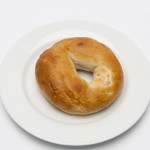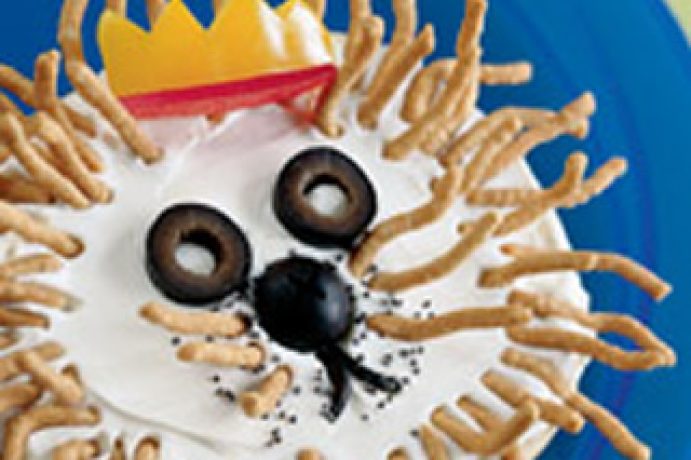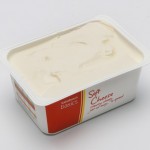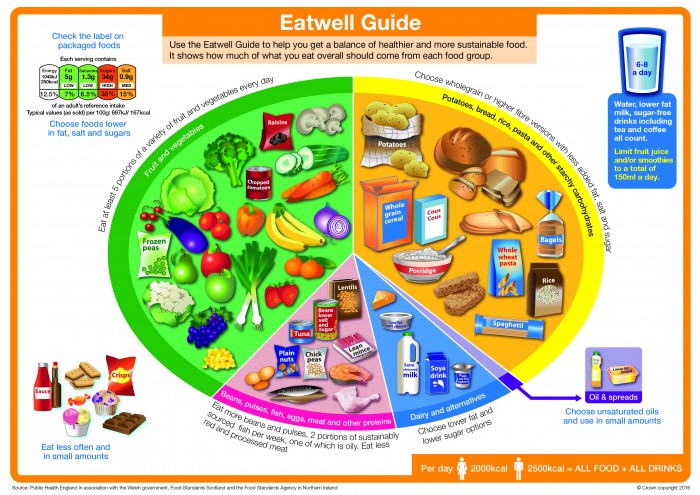A fun and imaginative way to encourage children to eat their 5-a-day. You can use a whole variety of toppings and bagels so there should be something for everyone.Why not make Phunky animal faces or faces which look like them!
Skill Check (as appropriate for each Key Stage)
Follow a recipe; follow food safety & hygiene rules; chop using bridge/claw safely; spread with a knife/spoon; tidy away.
Equipment
Knives, Chopping Boards, Bowls
Ingredients (serves 1 child)
- Plain Bagel
- Soft Cheese, reduced fat if possible
- Assorted toppings - carrots, cherry tomatoes, peppers, cucumber, celery, olives, grapes, apples, banana, strawberries, rocket or other salad leave
Method
- Prepare a range of fruits and vegetables. The fruits and vegetables should be prepared in a range of ways i.e. grated, chopped, sliced and diced.
- Halve and toast a bagel, one half per child.
- Pupils should spread the cream cheese or dip onto the bagel (going gently over the hole).
- Set out bowls of vegetables and rocket which will act as facial features and hair
- Children should turn their bagels into faces by decorating them with various fruits and vegetables.
Fun Breakfast Fact
Bagels are thought to have debuted in 1610 in Krakow, Poland. The chewy bread is shaped and then boiled prior to baking. The hole in the middle is so that street vendors could put them on a dowel and sell them on the streets.
So thinking about bagels...

Soft Cheese contains calcium and protein making it a great breakfast food for kids; but it’s also high in fat and sodium so make sure you use reduced fat varieties where possible
Activity and Discussion Ideas
- Ask pupils to discuss the main ingredients and identify where they fit on the eatwell guide. Are there any food groups missing? Is there a good balance of the food groups? Is there anything the pupils would add to either the recipe, or the meal, to make it healthier or more balanced?
- Ask the pupils to draw more ideas of bagel faces and label them with the food types that they have used
Nutritional Information
| - | Energy | 1066KJ/253kcal | 13% |
| Med | Fat | 5.7g | 8% |
| Med | Saturates | 2.8g | 14% |
| Med | Sugars | 6.6g | 7% |
| Med | Salt | 1.0g | 16% |
per 130g serving
% of an adult's reference intake
Typical values per 100g: Energy 820KJ/ 194kcal
Notes
A traffic light system is used on nutrition labels to make it easier to see which foods and drinks are lower in calories, fat, sugar and salt. Try and choose more ‘greens’ and ‘ambers’ and fewer ‘reds’, and stick to smaller portions of ‘reds’.
Just because a recipe or a food has a red traffic light doesn’t mean you shouldn’t eat it. Understanding why a food or recipe might have a red light can be helpful. For example oily fish is high in total fat and so any recipe containing oily fish is likely to be ‘red’ for fat. But it is recommended that we eat oily fish at least once a week because the type of fat it contains is beneficial for our health.
% Reference Intakes are also shown. Reference Intakes are guidelines about the approximate amount of particular nutrients and energy required for a healthy diet (based on an average-sized woman doing an average amount of physical activity). Most children will require less than these Reference Intakes. The contribution of one serving of a food or drink to the Reference Intake for each nutrient is expressed as a percentage.





